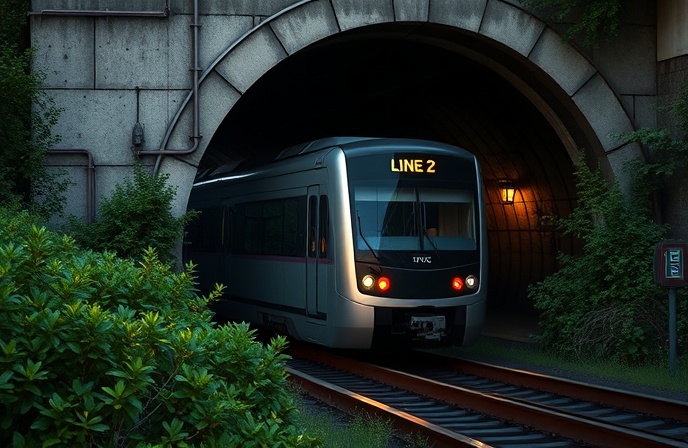Alstom & Liebherr: Hydrogen Trains Revolution

The Rise of Hydrogen Fuel Cells in the Railway Industry: A Strategic Partnership Between Alstom and Liebherr
The global railway industry is undergoing a significant transformation, driven by the urgent need to reduce carbon emissions and embrace sustainable transportation solutions. This article explores the strategic alliance between Alstom, a leading player in the railway sector, and Liebherr Aerospace and Transportation, a renowned manufacturer of compressors, focusing on their collaboration to advance hydrogen fuel cell technology for railway applications. The partnership aims to optimize hydrogen systems for trains, improving their efficiency, durability, and cost-effectiveness. This move is a crucial step towards widespread adoption of hydrogen-powered trains, marking a pivotal moment in the industry’s transition towards greener and more sustainable operations. The implications of this collaboration extend beyond individual companies, impacting the broader ecosystem of hydrogen production, distribution, and infrastructure development required for a successful hydrogen-based railway system. This analysis will examine the technical aspects of the partnership, its strategic significance within Alstom’s broader hydrogen strategy, and the potential impact on the future of railway transportation.
Alstom’s Expanding Hydrogen Portfolio
Alstom’s commitment to hydrogen technology is evident in its existing infrastructure and recent strategic acquisitions. The company’s international Centre of Excellence for ‘green’ traction systems in Tarbes, France, along with the Alstom Hydrogène site in Aix-en-Provence, provides a robust foundation for its hydrogen initiatives. The acquisition of Helion Hydrogen Power, a start-up specializing in high-powered fuel cells, further strengthened Alstom’s capabilities in this area. These investments underscore Alstom’s long-term vision for hydrogen-powered trains and demonstrate a significant commitment to researching, developing, and deploying this technology on a large scale. Moreover, previous partnerships with companies like Snam (Società nazionale Metanodotti) for infrastructure development in Italy and Plastic Omnium for hydrogen storage systems showcase Alstom’s collaborative approach to building a comprehensive hydrogen ecosystem.
Liebherr’s Contribution: Compressor Technology for Enhanced Fuel Cell Performance
Liebherr’s expertise in compressor technology is critical to improving the efficiency and durability of hydrogen fuel cells. Their involvement in this partnership focuses on enhancing three key areas: increased power density, improved durability, and reduced manufacturing costs. Higher power density leads to greater range and performance for hydrogen trains, while improved durability extends the lifespan of the fuel cells, reducing maintenance and lifecycle costs. Finally, lower manufacturing costs are vital for making hydrogen-powered trains economically viable and competitive with traditional diesel or electric trains. Liebherr’s contribution is essential for realizing the full potential of hydrogen fuel cells as a sustainable power source for railway applications. Their technological contributions will be instrumental in overcoming some of the key challenges currently hindering wider adoption of this technology.
Building a Comprehensive Hydrogen Ecosystem
The success of hydrogen-powered trains hinges not only on the technology itself but also on the development of a supportive ecosystem. This encompasses the entire supply chain, from hydrogen production and storage to refueling infrastructure and maintenance. Alstom’s collaborative approach, as evidenced by its various partnerships, is key to creating this ecosystem. The agreement with Snam highlights the importance of integrating hydrogen production, transport, and refueling infrastructure with the train technology itself. Similarly, the partnership with Plastic Omnium demonstrates the need for advanced hydrogen storage solutions that are both safe and efficient. The collaboration with Liebherr represents a critical step towards optimizing the fuel cell technology that lies at the heart of these trains. A successful hydrogen railway ecosystem requires close collaboration between train manufacturers, infrastructure providers, and energy companies, a model that Alstom is actively promoting.
Conclusions: A Pivotal Step Towards Sustainable Rail Transportation
The partnership between Alstom and Liebherr marks a significant milestone in the advancement of hydrogen fuel cell technology for the railway industry. Alstom’s strategic investments, including the acquisition of Helion Hydrogen Power and its partnerships with Snam and Plastic Omnium, demonstrate a clear commitment to building a comprehensive hydrogen ecosystem. Liebherr’s expertise in compressor technology is critical to improving the efficiency, durability, and cost-effectiveness of hydrogen fuel cells, addressing key challenges that currently limit the wider adoption of this technology. The collaboration focuses on enhancing power density, extending lifespan, and reducing manufacturing costs, all crucial factors for the commercial success of hydrogen-powered trains. This synergistic approach, encompassing both the train technology and the supporting infrastructure, paves the way for a significant shift towards more sustainable and environmentally friendly rail transportation. The long-term implications are substantial, potentially transforming the railway industry’s environmental footprint and paving the way for a cleaner, more efficient, and sustainable future for rail travel. The success of this partnership could serve as a model for other industries seeking to transition to hydrogen-based solutions, demonstrating the potential of strategic collaboration to drive technological advancements and accelerate the global shift towards a greener future.


